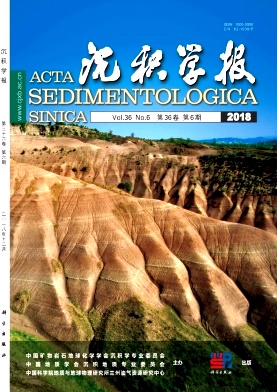Timing and Structure of the Heinrich 2 Abrupt Event Inferred from a Speleothem Record from Xianyun Cave, Western Fujian Province
doi: 10.14027/j.issn.1000-0550.2018.143
- Received Date: 2018-04-23
- Rev Recd Date: 2018-06-04
- Publish Date: 2018-12-10
-
Key words:
- Heinrich event 2 /
- Stalagmite /
- East Asian Monsoon /
- Xianyun Cave /
- sub-cycles
Abstract: The Last Glacial Maximum (LGM), which was the last and largest glacial period in the history of the Earth's climate, has long been a hot issue in paleoclimate research. The Heinrich2 abrupt event (H2 event) was a typical ice raft debris event formed in the LGM, which occurred about 25-24 kyr B.P. During the H2 event, ice raft debris extended southward, and large amounts of cold and fresh water were integrated into the North Atlantic. This led to the reduction of the Atlantic Meridional Overturning Circulation (AMOC), cooling of the Northern Hemisphere, and weakening of the East Asian Summer Monsoon (EASM) as a result of the southward shift of the Inter-tropical Convergence Zone (ITCZ). Although the H2 event is recorded in global records, there are still some discrepancies about the beginning and ending times of the H2 event due to the accuracy of dating and sample resolution. The NGRIP δ18O record with layer-counting time scales is not significant at the H2 event. The age of the H2 event can be calibrated in stalagmite records of high-precision 230Th ages in the Asian monsoon region, but the time and structure still need to be further investigated.
Xianyun Cave (116°59'E, 25°33'N, 970 m a.s.l) is located in Laiyuan Town, Liancheng County, Fujian Province, Southeast China. The cave is approximately 970 m in altitude and overlain by 30-50 m of Permian limestone bedrock. Annual average temperature in the region is 19.3℃, and the mean precipitation is 1 500-1 700 mm. The cave temperature is about 17.5℃. The relative humidity inside is close to 100%. The precipitation of δ18O in Xianyun Cave area is strongly influenced by the EASM:when the summer monsoon is strong, the δ18O value of precipitation is negatively biased, and vice versa.
This paper presents a high-resolution stalagmite isotope record (XYⅢ-28) from Xianyun Cave in western Fujian Province to reveal the detailed precipitation history of the EASM from 26.33 to 22.98 kyr B.P., based on nine high-precision 230Th ages and 301 oxygen isotope data points and yielding an average resolution of 11 years. The high-resolution stalagmite δ18O record is characterized by a positive shift process during the interval 24.09-23.39 kyr B.P. with an amplitude of 0.7‰, which demonstrates this remarkable H2 event from the North Atlantic. According to the midpoint of the main transition process, the beginning and ending times of the H2 event can be dated as 24.09±0.06 kyr B.P. and 23.39±0.07 kyr B.P., respectively. The duration of the H2 event was 0.69±0.06 kyr. The H2 event recorded by XYⅢ-28 shows a very obvious centenary-decade scale "double-positive" sub-cycle feature structure. This feature, which was recorded in the XYⅢ-28, also existed in the H1 event, the Younger Dryas event, and the Little Ice Age, illustrating that the internal structure of these extreme cooling events is unstable and that their driving mechanisms may be similar. Compared with paleoclimate records for high and low latitudes, XYⅢ-28 shows an anti-phase relationship between the Northern and Southern Hemispheres, namely the "see-saw" model.
| Citation: | CHE YinPing, XIAO HaiYan, CUI MengYue, JIANG XiuYang, CAI BingGui. Timing and Structure of the Heinrich 2 Abrupt Event Inferred from a Speleothem Record from Xianyun Cave, Western Fujian Province[J]. Acta Sedimentologica Sinica, 2018, 36(6): 1139-1147. doi: 10.14027/j.issn.1000-0550.2018.143 |






 DownLoad:
DownLoad: